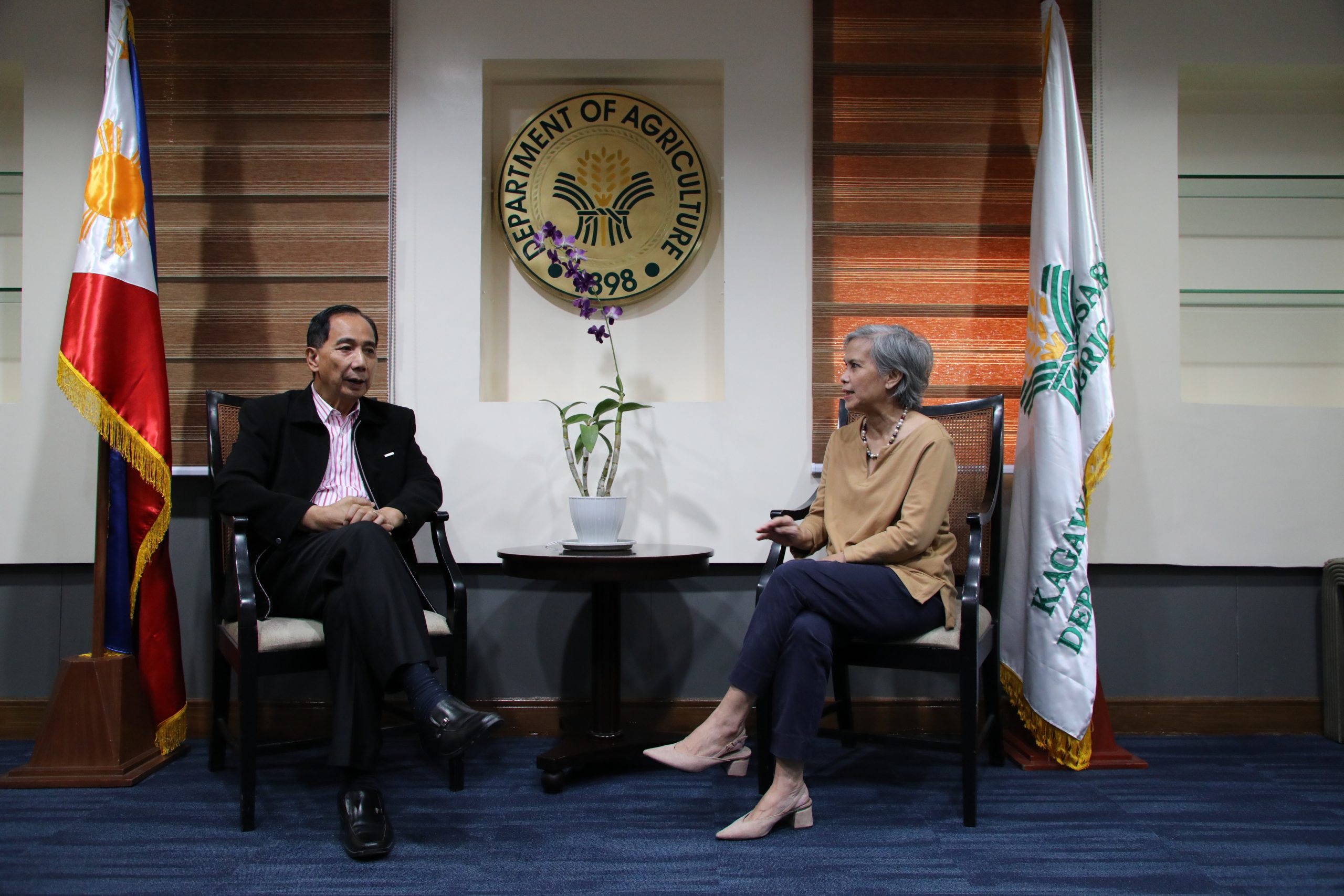
The Department of Agriculture (DA) and non-government organization Oceana Philippines once more affirmed their strong cooperation in promoting sustainable ocean management and conservation.
Agriculture secretary William Dar was personally informed by Oceana vice president Atty. Gloria Estenzo Ramos that the country’s Fisheries Management Area (FMA) 11 is the latest to adopt the DA’s National Sardine Management Plan (NSMP) 2020-2025 in its Management Framework Plan. FMA 11 covers the Visayan Sea, Tañon Strait Protected Seascape, and Guimaras Strait.
During a June 29 courtesy call on the DA chief, Ramos said that FMAs 7 and 12 were the first two to adopt the NSMP, followed by FMA 11, leaving eight more FMAs that need to comply with the Plan.
FMA 7 covers Sorsogon Bay, Ragay Gulf, Ticao Burias Pass, Cariaga Bay, Magueda Bay, San Bernardino Strait, Irong-Irong Bay, and Samar Sea); while FMA12 includes Balayan Bay, Calatagan Bay, Batangas Bay, Tayabas Bay, Tablas Strait, Mogpog Pass, and Sibuyan Sea.
Signed by Secretary Dar in 2020, the NSMP reported an increasing sardine production trend from 2002 to 2009, albeit followed by a sharp decline in 2010 and 2011. Sardine catch later stabilized at 346,826 metric tons (MT) annually, noting an average production volume of 333,743 MT for the past years, according to figures gathered by DA’s Bureau of Fisheries and Aquatic Resources (BFAR).
The national sardine management plan aims to achieve a sustainable and equitably-shared sardine fishery that contributes to food security and increased incomes of fisherfolk through responsible management. It entails the implementation of three major components: improved science-based indicators for the sustainability of fish stocks; improved distribution of benefits among sardine fisherfolk and; strengthened science-based management for sustainable sardine fisheries.
“We are so grateful for the reforms that you have instituted under your leadership, and these will really go a long way towards having a sustainable management of our fisheries,” Ramos told Secretary Dar.
In reply, the DA chief said the Department did not back down on controversies surrounding the DA-BFAR Fisheries Administrative Order (FAO) 266, that imposes the installation of vessel monitoring mechanism (VMM) and electronic reporting system (EPS) by commercial Philippine-flagged fishing vessels in a bid to deter illegal, unreported, and unregulated fishing (IUUF) in domestic waters, as well as to immediately determine and act on maritime accidents and disasters.
Some industry members challenged the FAO 266 issuance in RTC Malabon City which issued a permanent injunction against the FAO implementation by the DA-BFAR and the National Telecommunications Commission (NTC), which is tasked to issue Maritime Mobile Service Identity numbers for the VMS. This court ruling has been appealed to the Supreme Court separately by the government and Oceana together with the fisherfolk.
Oceana also plans to appeal to the NTC to lift its order to not register any VMS number, as well as to explore options in order to push for the VMM implementation.
For his part, Secretary Dar expressed support for Oceana and its advocacies—including the VMM implementation—which contribute to the realization of a bountiful, prosperous, and resilient Philippine fisheries industry.
“We did our best. We meant business and they were not able to do hanky-panky much more this time around,” the DA chief said, referring to unscrupulous individuals and groups in the country’s agri-fishery sector.
Joining Ramos during the courtesy call were Oceana legal and policy director Atty. Liza Osorio, campaigns and research director Atty. Rhea Yray-Frossard, communications manager Joyce Sierra, and senior campaign manager Daniel Ocampo.
On the DA’s side, secretary Dar was joined by Department spokesperson and assistant secretary for strategic communications Noel Reyes, and legal service director Atty. Armando Crobalde, Jr. ### (Krystelle Ymari A. Vergara, DA-AFID)













